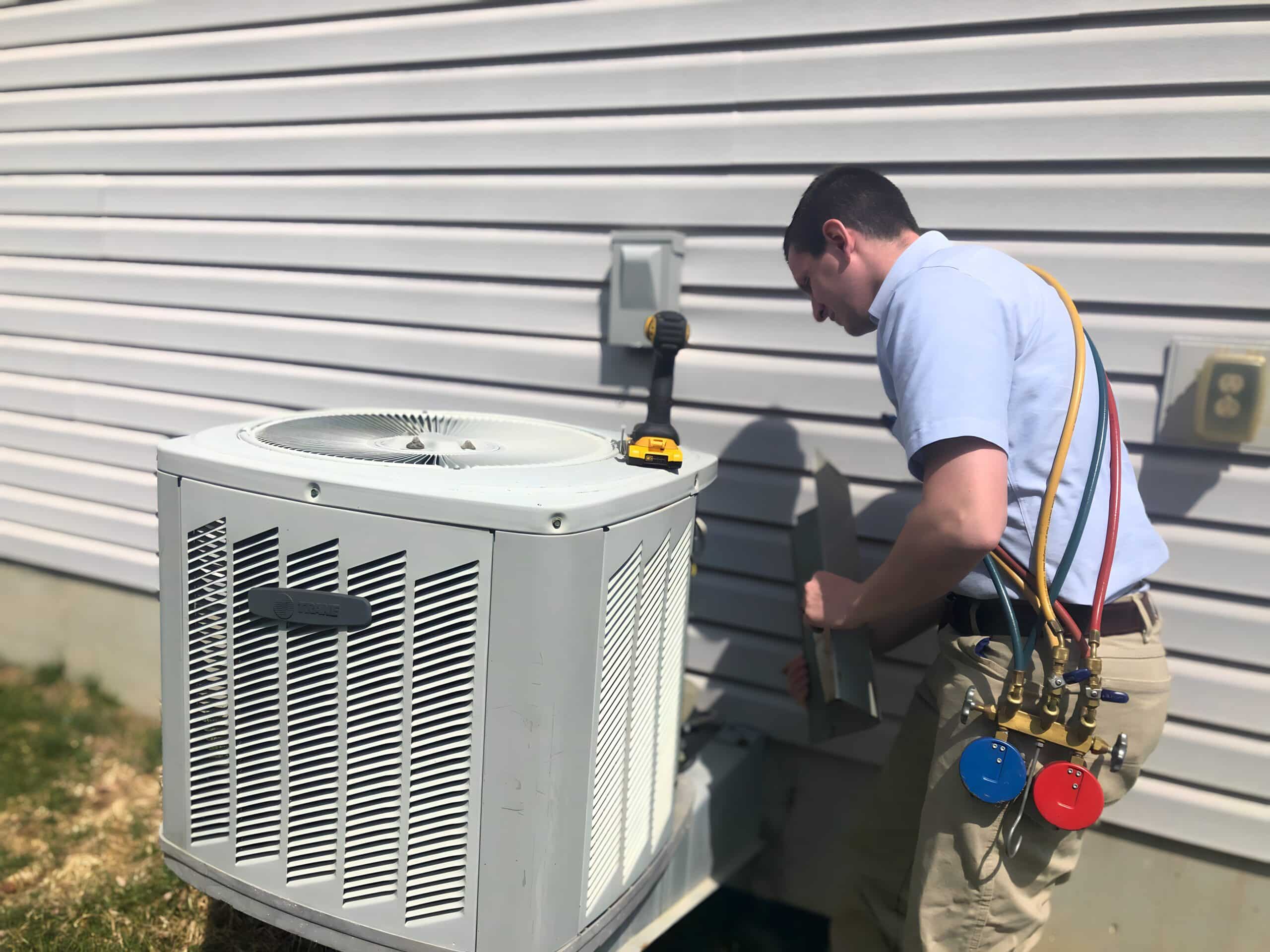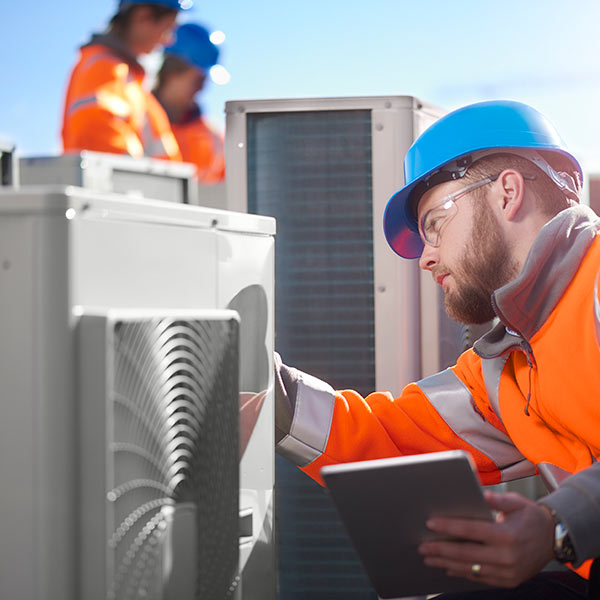Why Homeowners are Choosing ductless mini splits for Energy Savings
Why Homeowners are Choosing ductless mini splits for Energy Savings
Blog Article
Just How a Heatpump and Heating System Job Together to Enhance Your Home's Home heating Efficiency
Understanding exactly how a heatpump and heating system collaborate is essential for house owners looking for reliable heating options. Each system has its strengths, offering a balanced strategy to home convenience. The heatpump masters modest temperatures, while the heater supplies quick warmth during extreme cold. This synergy not only lowers power costs but additionally enhances the lifespan of both appliances. What elements affect this cooperation, and exactly how can homeowners optimize their benefits?
Understanding Warmth Pumps: Exactly How They Work
Although lots of people might be unfamiliar with their inner functions, warmth pumps play an essential duty in contemporary heater. These tools run by transferring warmth from one area to another, making use of the concepts of thermodynamics. In colder months, a heatpump extracts warm from the outside air, ground, or water, and transfers it inside to warm the home. On the other hand, during warmer months, it can turn around the process, working as an ac unit by eliminating warm from inside to the outside.Heat pumps include an evaporator, condenser, expansion, and compressor valve. The refrigerant within the system soaks up heat as it evaporates at reduced temperatures and pressures. The compressor after that boosts the stress and temperature of the cooling agent, enabling it to release warmth as it condenses. This effective process can significantly decrease energy usage compared to traditional home heating approaches, making heatpump a lasting selection for environment control in homes.
The Function of Heaters in Home Home Heating
Furnaces play a vital role in home heating by offering a reliable resource of heat throughout the colder months. They operate by producing warmth with burning or electrical resistance, dispersing it throughout the home via air ducts or radiant systems. The performance of a heating system is usually measured by its Annual Fuel Application Performance (AFUE) score, which indicates how successfully the unit converts gas right into heat.Furnaces can use various power sources, consisting of natural gas, electricity, oil, or gas, permitting homeowners to pick one of the most suitable option for their needs. Unlike heatpump, which might battle in extreme cool, heaters preserve constant performance, ensuring that indoor temperature levels stay comfy regardless of exterior problems. Furthermore, contemporary heaters often come outfitted with advanced innovation, such as smart thermostats and variable-speed blowers, improving their efficiency and responsiveness. This flexibility makes furnaces an important element in all-encompassing home heating strategies.

Advantages of Making Use Of Both Solutions Together
Incorporating the toughness of both heating systems and heatpump can result in a much more reliable and effective home heating service. Utilizing both systems permits property owners to capitalize on the heatpump's energy performance during milder temperature levels while counting on the furnace for more extreme cold conditions. This dual approach can substantially lower energy costs, as heatpump eat much less electrical energy than typical home heating techniques when temperatures are moderate.Additionally, making use of both systems together can improve comfort levels in the home. Heatpump can give regular, also heating, while furnaces can rapidly raise ambient temperature levels when needed. Furthermore, the assimilation of both systems can prolong the life expectancy of equipment by decreasing wear and tear on each system, as they share the work. Eventually, homeowners can delight in a well balanced, affordable heating option that readjusts seamlessly to varying climate conditions, making sure a warm and inviting home throughout the cold weather.
Just How Heat Pumps and Furnaces Complement Each Various Other
They develop a corresponding home heating system that optimizes effectiveness and convenience when home owners integrate warm pumps and heaters. Heat pumps operate by transferring warm from the outside air or ground, making them very effective in moderate climates. They stand out throughout milder temperatures, supplying economical heating. Alternatively, heaters produce heat with combustion or electric resistance, supplying strong, prompt warmth throughout extreme chilly conditions.The mix of these 2 systems allows for dynamic adjustments based upon temperature level fluctuations. During warmer months or milder winter months days, the warmth pump can take the lead, saving power and minimizing costs. As temperature levels decline, the heating system can perfectly involve, ensuring regular warmth throughout the home. This harmony not only optimizes power use but additionally enhances the life expectancy of both systems, as each device runs within its perfect performance range. With each other, they produce a balanced setting that adapts to differing climate demands.
Maximizing Efficiency: Tips for Homeowners
Homeowners can improve their home heating efficiency via several practical techniques. Establishing a regular maintenance routine, integrating smart thermostat technology, and implementing reliable insulation and securing options are key actions. These measures not only improve comfort yet additionally lower power expenses.
Normal Upkeep Set Up
To guarantee maximum home heating efficiency, establishing a regular upkeep schedule is important for any kind of home. House owners need to focus on routine evaluations of both heatpump and heating systems to determine peak performance. This consists of altering air filters every one to three months, as clogged filters can considerably minimize effectiveness. Additionally, scheduling expert maintenance at the very least annually permits technicians to identify and attend to potential problems prior to they rise. Homeowners should likewise cleanse the warm pump's outdoor system to avoid particles build-up that can hinder airflow. By adhering to a normal upkeep schedule, house owners not just boost their heating unit' effectiveness but also prolong their life expectancy, bring about better comfort and lowered energy prices throughout the chillier months.
Smart Thermostat Combination
Integrating a smart thermostat into a home heater can significantly enhance energy efficiency, especially as it enables accurate control over temperature level settings. These tools can find out the home owner's schedule and preferences, instantly readjusting the temperature to optimize comfort while decreasing power use. For example, they can reduce heating during times when the home is vacant, lowering unneeded consumption. Many smart thermostats also offer real-time power use data, enabling homeowners to make educated choices concerning their home heating behaviors. In addition, remote accessibility by means of mobile phone applications permits individuals to readjust settings from anywhere, ensuring the home is cozy upon return. In general, wise thermostat integration not just boosts convenience yet substantially adds to energy financial savings and effectiveness.
Insulation and Sealing Solutions
Smart thermostats play a critical function in energy performance, but their effectiveness can be greatly boosted by appropriate insulation and sealing solutions. Property owners must prioritize insulating walls, floorings, and attics to lessen warmth loss. Top notch insulation products, such as spray foam or fiberglass, can considerably boost thermal resistance. Additionally, sealing spaces around air ducts, doors, and home windows prevents chilly air infiltration and warmth retreat. Weatherstripping and caulking work techniques for addressing these leaks - heat pump installation ooltewah tn. Normal inspections for air leakages, along with the use of blower door examinations, can assist determine issue areas. By buying insulation and sealing, home owners can maximize the efficiency of their heater, eventually causing lowered power intake and reduced energy expenses
Usual Misconceptions Regarding Warm Pumps and Furnaces
What false impressions border warmth pumps and furnaces? Many individuals incorrectly think that warmth pumps are ineffective in colder climates. In truth, modern-day heatpump are designed to run effectively also in low temperatures, providing reputable heating throughout winter season. One more common myth is that furnaces are constantly extra effective than warmth pumps. This depends on the particular energy resources and effectiveness scores of the systems in question. Some might additionally think that utilizing both systems concurrently is unnecessary, but in truth, this mix can optimize home heating performance, specifically throughout severe weather. Furthermore, people typically presume that warm pumps need consistent maintenance, when truthfully, they have comparable upkeep useful reference requires to conventional furnace. By debunking these myths, house owners can make even more enlightened decisions regarding their home heating alternatives, inevitably causing enhanced comfort and power efficiency in their homes.
Upkeep Considerations for Combined Systems

Regularly Asked Inquiries
Can Warm Pumps Work Successfully in Extremely Cold Climates?
Heatpump can battle in very cold environments because of lowered efficiency and warm removal limitations. However, developments in modern technology have actually resulted in designs designed for much better efficiency in such problems, improving their practicality in rough settings.
How Much Time Do Heat Pumps and Furnaces Commonly Last?
Heatpump generally last 15 to two decades, while heating systems have a lifespan of 15 to three decades. Normal upkeep can prolong their long life, ensuring effective procedure and reducing the demand for early replacements.

What Is the Ordinary Cost of Putting Up Both Equipments?
The typical price of setting up both a heatpump and a furnace typically varies in between $5,000 to $10,000 - heat pump replacement ooltewah tn. Factors affecting this cost include system size, installation complexity, and local labor prices
Are There Tax Incentives for Utilizing Energy-Efficient Home Heating Systems?
Several homeowners ask about tax obligation rewards for energy-efficient heater. Numerous government and state programs often offer rebates or credit scores, encouraging the adoption of sustainable innovations to decrease power usage and advertise ecological duty.
Exactly how Do I Pick the Right Size Heatpump and Heating System?
Choosing the right dimension heatpump and furnace entails determining the home's square video, thinking about insulation quality, and assessing local environment. Consulting a specialist can assure perfect system performance and energy performance based upon specific demands. furnace replacement. Recognizing exactly how a heat pump and heating system Home Page job together is important for property owners seeking effective heating remedies. In colder months, a heat pump removes warm from the outdoors air, ground, or water, and transfers it inside your home to warm the living space. When homeowners integrate warm pumps and heaters, they create a corresponding heating system that maximizes efficiency and convenience. Heat pumps run by transferring warm from the outside air or ground, his response making them extremely efficient in moderate climates. Warmth pumps can have a hard time in very cold environments due to reduced effectiveness and warmth removal limitations
Report this page